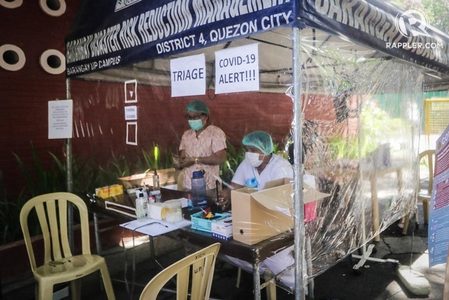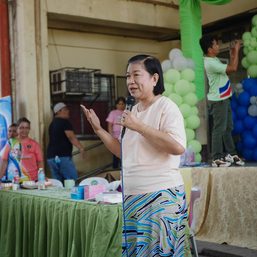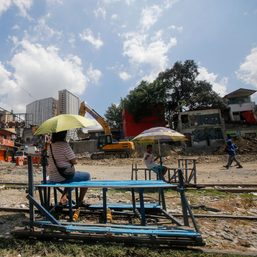SUMMARY
This is AI generated summarization, which may have errors. For context, always refer to the full article.

The Department of Health (DOH) urged Filipinos to be on guard and observe minimum health protocols after it observed an increase in new coronavirus cases reported over recent days.
In a press briefing on Tuesday, July 20, Health Undersecretary Maria Rosario Vergeire said that while the National Capital Region (NCR) was classified as “low-risk” area for COVID-19 based on indicators, Filipinos should not be complacent.
“If we look at each city, we have observed that there has been a slight increase in cases and we are observing in the hospitals that there is a slight uptick in the number of people who are going there because of COVID-related symptoms,” Vergerie said in a mix of English and Filipino.
Health Secretary Francisco Duque III earlier told President Rodrigo Duterte that Metro Manila was once again seeing a rise in cases, though so far, the overall trend in NCR is that cases were “plateauing.” Duque said as of July 19, NCR registered the highest number of cases at 941, followed by Calabarzon at 808, Western Visayas at 771, Central Visayas at 653, and Central Luzon at 427.
The increase comes as the threat of the more contagious Delta COVID-19 variant looms. The Philippines has so far reported 35 cases known cases of the variant, including three deaths, eight cases in isolation, and 24 other recoveries.
Delta has been fueling a surge of case in the region with other Southeast Asian countries grappling with deadly increases in infections. Indonesia had recently been named the new center of the global pandemic.
The Octa Research group flagged the same trend in NCR in a report published on Tuesday, saying the reproduction number in Metro Manila increased to 1.06, the first time it went above the figure 1 threshold since April, when the capital region was still under an enhanced community quarantine.
The group noted that average daily new cases also increased by 11% to 701 from July 13 to 19 – higher than the less than 700 daily average new cases seen over the past four weeks.
While it was a “cause for concern,” Octa said the recent rise in cases was ”not yet a cause for alarm’” since it was still too early to determine if this would lead to an increasing trend in infections. The trend in cases seen in the coming week will be key in shaping the outlook for the capital region, it added.
Octa said the cities of Manila and Makati, in particular, saw high reproduction numbers. Other local governments with a “significant growth rate” were Valenzuela, Pasay, Marikina , and Parañaque. Intensive care unit (ICU) utilization in Taguig City likewise increased to 100%.
Other areas to watch
On Tuesday, Vergeire said the DOH was keeping close watch on high risk areas in the Philippines, including Davao region, Western Visayas, and the Cordillera Administrative region.
Vergere said Davao region’s ICU capacity remained “critical,” with at least 85% of beds occupied, while Soccsksargen and the Zambaonga Peninsula had their ICU capacities at “high-risk” with at least 70% to 84% of beds occupied.
The Philippines has been on heightened alert over the Delta variant, formerly called the Indian variant. The variant has gained attention and concern because of its worrying traits, including increased transmissibility, higher risk of hospitalization and prolonged hospital stay, as well as its effect on vaccines’ efficacy if only one dose is received.
What DOH is doing
Vergeire said health and pandemic officials in the country have been reinforcing health systems since India saw a deadly surge in cases around May.
Hospitals had sufficient supplies of oxygen tanks so far but Vergeire said the DOH was working with the Department of Trade and Industry to have at least twice the current amount of stock on hand. This was based on trends in countries where the Delta variant was spreading.
The release of Philippine Health Insurance Corporation reimbursements were also prioritized for high risk areas in the country to allow private hospitals to purchase needed supplies quickly.
Aside from this, Vergeire said the DOH was hiring more health workers and is pre-positioning emergency supplies of mechanical ventilators, high flow nasal cannulas, and oxygen concentrators, among other equipment. – Rappler.com
Add a comment
How does this make you feel?






There are no comments yet. Add your comment to start the conversation.